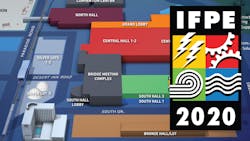Among the sessions at the 2020 IFPE show at the Las Vegas Convention Center March 10-14 will be a session presented by Vince Anewenter, director of the Rapid Prototyping Center of the Milwaukee School of Engineering. Entitled, “Additive Manufacturing—An Emerging Opportunity”, the session will be held Thursday, March 13 at 11 a.m. in Room S229 of the convention center. Hydraulics & Pneumatics discussed with Anewanter how additive manufacturing and hydraulics fit together:
H&P: Additive manufacturing and hydraulics don’t see a natural fit. What are the opportunities around additive manufacturing for the industry?
Anewenter: The opportunities for additive manufacturing applications within the hydraulics industry are plentiful. Examples of this include:
- Production for tooling and patterns for sand or investment castings, viable at a wide range of size and volumes.
- Jigs, fixtures and end of arm tooling to increase productivity of existing production methods, help integrate automation, and improve quality.
- Direct printed light weight end use manifolds and components for the aerospace industry.
- Microfluidic opportunities for medical or mechatronics.
H&P: As systems get more complex, the complexity of parts also will evolve. What does additive offer in this area?
Anewanter: Leveraging complexity is where additive manufacturing really shines! This is because the cost drivers for additive are opposite those of most traditional manufacturing methods. With additive, complexity is free, conversely material volume can be expensive.
H&P: What should smaller companies do if they’re interested in exploring including additive in their strategy?
Anewanter: My advice to any company, large or small, is to educate themselves on the various additive manufacturing processes and then purchase services for a while before making a significant investment. This is a quickly evolving industry, where step changes are common and so are pitfalls.
New materials and technologies are being released at a rate that is unprecedented, which can often create a panicked sense of urgency to get involved. All too often this can lead to a company making a capital purchase based on available budget, not documented use. These new technologies are often released in an unperfected state, which requires continued testing and validation.
I would recommend partnering with an applied research focused consortium such as the Rapid Prototyping Consortium at Milwaukee School of Engineering, or partnering with a local service provider to start determining what the best solutions are; vet those solutions, and then determine if it makes operational sense to bring it in-house or continue to outsource.
About the Author
Bob Vavra
Senior Content Director, Power & Motion and Machine Design
Bob Vavra is the Senior Content Director of Power & Motion and its sister publication Machine Design. Vavra has had a long career in publishing, media and events. He has covered all aspects of manufacturing for the past 20 years and is a regular attendee at events such as IMTS and Hannover Messe. Vavra is also a sought-after webcast moderator and event emcee, and has presided over events in the U.S., Germany and China.

Leaders relevant to this article:
